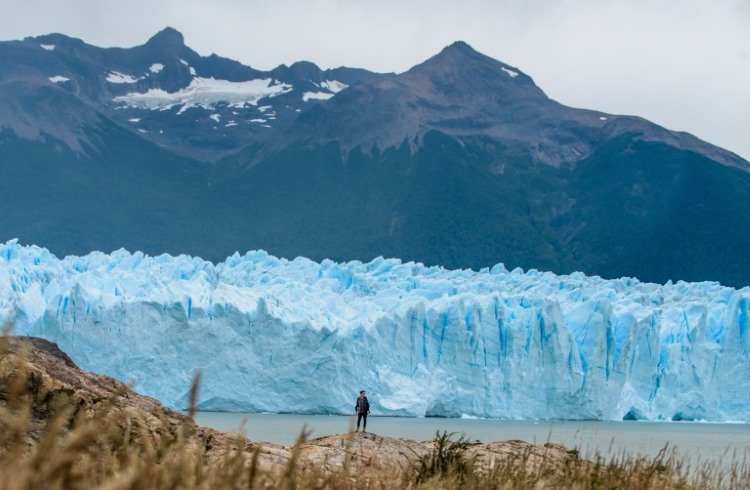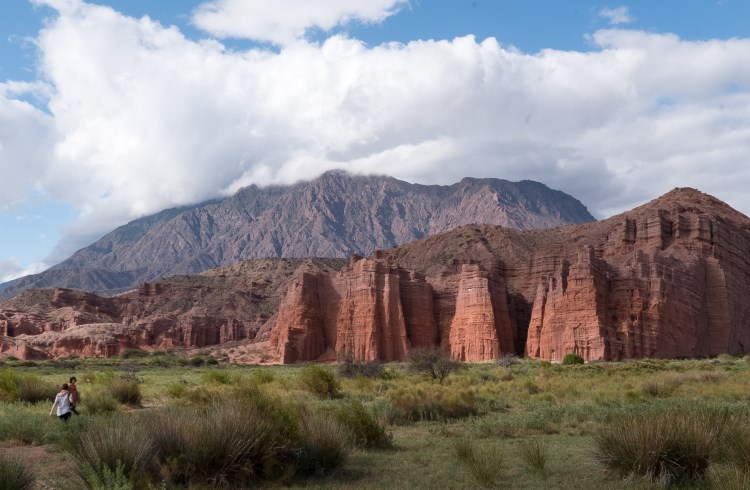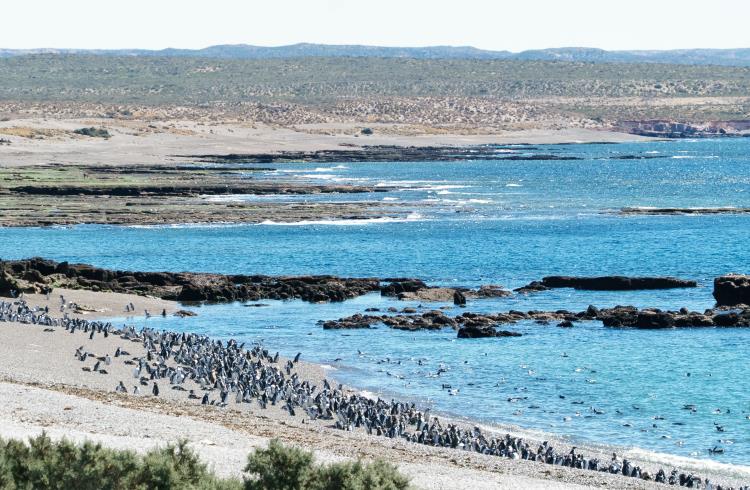The Top 5 Best Ways to Make Money While Traveling
8 min readIs Argentina expensive? When is the best month to visit? What’s the best way to get around? These Argentina travel tips and advice from Buenos Aires local Martina will help you make the most of your time here.

Photo © Sean O’Reilly
Essential tips for first-time travelers
- Learn basic Spanish. While many locals speak English, knowing key phrases can enhance your experience and may come in handy in more remote area.
- Pack for varied weather. Argentina’s diverse climate means you might encounter everything from sun to snow.
- Plan your time wisely. Argentina is very large – 2,360 mi (3,800km) long and 880 mi (1,420) wide. So, if you have limited time, select a few towns or regions to explore rather than trying to see it all.
- Embrace local cuisine. Don’t miss trying empanadas, asado, and mate.
- Use public transportation. It’s efficient and affordable, especially in cities.
- Beware of crime and theft. Keep your belongings secure and be mindful of your surroundings.
- Bring cash. Many places prefer cash over credit cards, especially in smaller towns.
- Respect local customs. Familiarize yourself with Argentine etiquette and social norms to improve your understanding and enjoyment of the culture.
- Plan for altitude. If visiting high-altitude areas like Mendoza, allow time to acclimatize.
- Stay hydrated. The climate can be dry, especially in the northern regions, so drink plenty of water.
Is Argentina expensive?
In 2023, Argentina was very affordable for those bringing in high-value currencies, but inflation has skyrocketed in 2024. It’s still a relatively inexpensive destination, especially compared to Western Europe. If on a tight budget, expect to spend as little as US $35-40 per day, including hostel accommodation, cheap food, and local public transport.
Buenos Aires, Patagonia, and some other areas favored by travelers – including coastal towns such as Mar Del Plata and Pinamar, or iconic Iguazu Falls – are pricier. These destinations are always in high demand, both among locals and international visitors. Travel in remote areas can also be more expensive, as the transport of supplies becomes more difficult.
Money tips
Credit and debit cards are widely accepted. Still, many restaurants, grocery stores, or hotels only accept cash or require a minimum expenditure before they let you swipe.
Argentina’s currency is always volatile, especially in the current economic crisis, and exchange rates and regulations change quite often. When planning your trip, make sure to find information updated within the past three months.
Always keep cash and small change handy. If you need more, simply withdraw from one of the many ATMs scattered around cities and towns. Whatever you do, be discreet, avoid flashing your wallet, and don’t extract big amounts in one go.
A 10% to 15% tip is expected but not mandatory, especially when eating out.
What is the best time of year to visit Argentina?
As a rule of thumb, it’s best to visit between September and April (early spring through the beginning of fall). In the end, it will depend on where you decide to go, as the weather varies from region to region. But from spring to fall, you can generally find good weather around the country.
If you dislike extreme cold, avoid June-August, especially if heading to Patagonia. If intense heat is not your thing, skip Buenos Aires and the central and northeastern regions during summer. Here, you can expect 90°F (32°C) on a “cool” day.
Winters in Buenos Aires are mild, with temperatures ranging around 55°F (13°C). But, as you approach the south and westernmost regions, it starts to get more and more chilly.
When choosing what to pack, don’t forget sunscreen, as the sun in Argentina is seriously strong. Also, remember to bring layers of clothing. Many travelers visiting for two to three weeks choose to fly around the country because it’s so big. So, if you’re heading from Buenos Aires to Patagonia, you’ll likely experience a big temperature change.
Layering becomes essential when approaching the Andes, as temperatures drop suddenly from day to night, even over summer. Rain gear comes in handy especially when touring the central and northwestern regions, as it can rain buckets year-round. On average, November is the wettest month, country-wide.

Local public transport in Argentina
Argentina has a massive and budget-friendly public transit network. The easiest way get around most cities is with a SUBE card, which you can purchase in lottery shops, train and subway stations, and kiosks. This rechargeable card is not valid everywhere, but covers major urban areas and over 30 other smaller localities.
As long-distance buses are the main means of transportation outside of Buenos Aires, intercity trains have been neglected for decades. But recently, there’s been a resurgence of the Ferrocarril, connecting 12 of the 23 Argentinian provinces. If you have time, the trains are a leisurely way to explore parts of Argentina that are off the beaten path, but be warned that they can be slow, are not very comfortable, and sometimes may not leave on time.
Planning a trip to Argentina? Find out how travel insurance can cover adventure activities, lost or stolen baggage, medical emergencies and more.
Taking a taxi or an UBER
Catching a taxi is very easy in any Argentinian city and surrounding localities. As a precaution, especially at night, always ensure your taxi is licensed and belongs to a “Radio Taxi” company.
Some taxis will display a sign on the vehicle’s roof stating the company they belong to. If they don’t, and you decide to take it anyway, check out the taxi’s registration information displayed inside.
Be aware, taxis around the country have different colors. In Buenos Aires, they’re black and yellow, in Córdoba they’re white, and so on.
UBER became officially legal to use in Buenos Aires in September 2020, so now you can ride with peace of mind. UBER’s competitor, Cabify, is also available around the main cities.
If going out at night, call a taxi or take an UBER. Avoid standing by the bus stops or taking the subway when there’s no one else around, as you could be putting yourself at risk.
Top places to visit in Argentina
- Mountains and lakes in Patagonia. Argentinian Patagonia, which covers nearly all of southern Argentina, is a must. As an avid traveler who loves to brag about her home country, I’ve yet to meet anyone daring to question the absolute beauty of this region, with its dramatic, snow-capped mountains, blue lakes, villages, glaciers, and incredible hikes. Patagonian highlights include the Perito Moreno Glacier, Bariloche in the Lake District, Argentina’s hiking capital El Chaltén, remote Ushuaia at the tip of Tierra del Fuego, and Cerro Aconcagua, the tallest mountain in the Americas, in Mendoza (slightly north of the official start of Argentinian Patagonia).
- A road trip along the Andes. A popular itinerary for road-trippers is a tour of the country’s west, driving along Route 40. This drive skirts the Andes, and also covers the regions north of Patagonia – Cuyo and Northwest. The Andes is the longest mountain range in the world, and its southernmost stretch is home to the highest peaks in the Western Hemisphere, so be prepared for altitude sickness (as I learned the hard way).
- Varied landscapes in northern Argentina. Argentina’s north offers a wholly different travel experience, ranging from the arid and striking landscapes of Salta and Jujuy, near Bolivia, to the country’s very own New Wonder of the World, 269ft (82m) high, 1.6mi (2.7km) wide Iguazu Falls, in a lush rainforest along the Brazilian border.
- Wine and more in Mendoza. Mendoza, in the Cuyo Region of the central-west, is famous for wine, but this sometimes-underrated region is also filled with otherworldly landscapes, like the Pampa Negra, a volcanic black desert in Mendoza Province, the moon-like formations at the Valle de la Luna, the windy flats of Barreal in San Juan, and the Grand Canyon-esque Sierra De Las Quijadas in San Luis.
- Other standout natural landmarks in Argentina are the Esteros del Iberá, vast wetlands in Corrientes, and the wildlife-rich Valdes Peninsula in Chubut.
- Food and culture in Argentina’s cities. Travelers eager for a dose of urban life should know Buenos Aires has a reputation as a city that never sleeps. Museums, restaurants, nightlife, tango, and more make the Porteñian city sing. But Córdoba, Rosario, and Mendoza are also buzzing cities packed with activities, local culture, and great food. Try Rosario’s staple toastie – a carlitos – a traditional empanada Cordobesa, or a Mendozan classic such as humita en chala.

Top adventure activities in Argentina
If you seek thrills or love the outdoors, Argentina is an adventure traveler’s dream. Here are some of the best ways to experience its natural beauty and rugged terrain.
- Hiking in Patagonia: Patagonia is a world-class hiking destination, offering stunning trails such as the Fitz Roy Trek, the Torres del Paine Circuit, and the Laguna de los Tres.
- Glacier trekking: The iconic Perito Moreno Glacier is justifiably famous, and hiking on its ice is unforgettable. But you can also hike the Viedma Glacier, the largest glacier in Los Glaciares National Park. Guided tours are available for both.
- White-water rafting: You’ll find great rafting rivers all over Argentina, from Iguazu Falls to Patagonia. Navigate the famously thrilling Alumine River in the Lake District, or Juramento River in Salta, which has more than 10 rapids.
- Mountain biking and cycling: Enjoy gorgeous lake views from the tracks around Bariloche, or pedal through the vineyards in Mendoza. Road cyclists will find thousands of miles of scenic, sparsely trafficked roads. Try the Seven Lakes route or tour the fascinating Quebrada de Las Conchas.
- Surfing: Argentina isn’t usually thought of as a surfing destination, but it should be. Ride the waves at popular spots like Mar del Plata or Necochea, on the coast five or six hours south of Buenos Aires.
- Horseback riding: Explore the Argentine Pampas or the Andean foothills on horseback, like the traditional gauchos do. Be sure to visit an estancia for some wine and asado along the way.
- Wildlife viewing: Spot penguins and whales in the Valdes Peninsula (sometimes called the “Galapagos of the Atlantic”) or look for river otters, monkeys and capybara in the Esteros del Ibera.
Additional reporting by Ellen Hall



